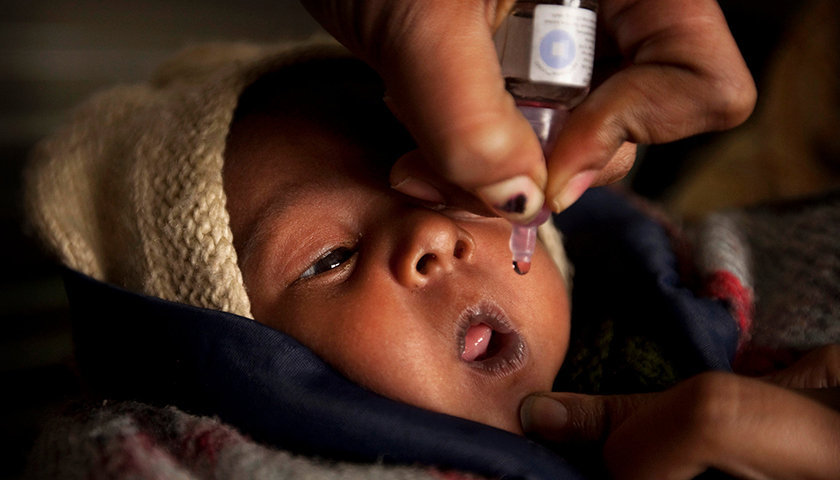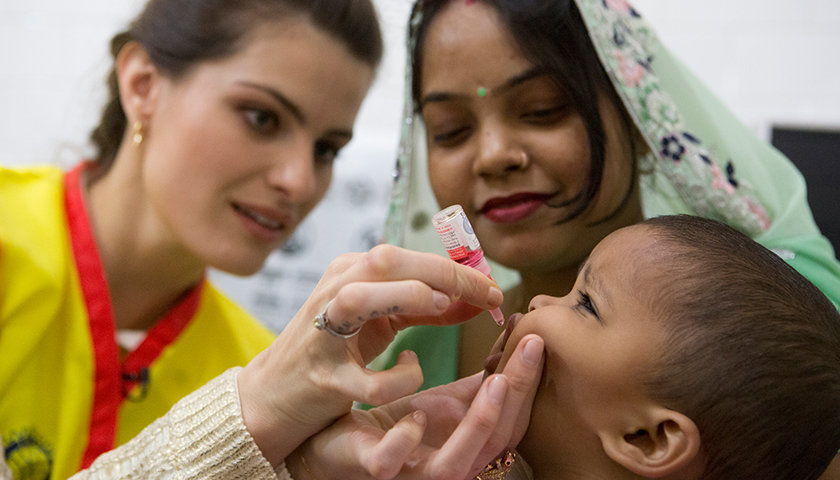
Why India lags behind in vaccinating its Children?
by Yash Saboo July 31 2018, 4:25 pm Estimated Reading Time: 2 mins, 44 secsA new study by the World Health Organization called Explorations of inequality: Childhood immunization, launched in July 2018 describes how a child’s likelihood of being vaccinated is affected by socioeconomic, demographic and geographic factors. The report is based on international household health surveys conducted in 10 countries.
The 10 countries are - Afghanistan, Chad, the Democratic Republic of the Congo, Ethiopia, India, Indonesia, Kenya, Nigeria, Pakistan, and Uganda - between 2012 and 2016. These countries face the most severe immunization challenges and together account for more than 70% of children who do not get a full course of basic vaccines.

The Logical Indian
The study has interesting findings.
In some countries, children who are the first born tend to have higher levels of childhood immunization coverage than later-born children. In Indonesia in 2012, more than three-quarters of first-born children were covered by DTP3 immunization, whereas just over a third of children born sixth or higher were covered. Similarly, India (2015-2016), Nigeria (2013) and Pakistan (2012) reported birth order DTP3 immunization coverage gaps that spanned more than 20 percentage points. In Chad and the Democratic Republic of the Congo, in contrast, there was almost no difference in childhood immunization coverage by birth order.
The study also proves that mother’s education level plays an important role in increasing the chances of a child getting immunized
“We must realize that every health system has its own inequities,” public health physician and social innovator Chandrakant Lahariya says. “Once a health programme reaches 80-90% of coverage, the challenge is to reach the last-mile users, who are the poorest and most vulnerable. This is where the role of data comes in, to design specific interventions which target such populations.”
Inequality on the basis of household economic status was pervasive: children from poor households were less likely to receive vaccinations than those in rich households. The countries demonstrated various patterns of inequality across household wealth quintiles. In Nigeria, the childhood immunization coverage increased steadily, moving from the poorest to the richest. In Indonesia and Pakistan, the poorest quintile (20%) of households had substantially lower coverage than the rest. For children in Nigeria in 2013 and Pakistan in 2012, the chance of being vaccinated for Diphtheria-tetanus-pertussis (DPT3) was 7 times greater among those in the richest households, compared to those in the poorest households, other characteristics being equal.
However, immunization among rich households in India has decreased overall. Vaccinations grew by 29% among the poorest one-fifth of the population, while full immunization among the wealthiest one-fifth fell slightly, according to this January 14, 2018, analysis of NFHS 2015-16 data by Scroll.in.

A Plus
It was also shocking to note that More than seven in ten Indians are not covered by insurance. Indians are the sixth biggest out-of-pocket health spenders in the low-middle income group of 50 nations, as reported by IndiaSpend.
When it comes to comparing states, Nagaland performed the worst on immunization–just 35% of children were vaccinated in 2015-16, according to NFHS data cited. Rajasthan (55%), Madhya Pradesh (54%), Uttar Pradesh (51%), and Gujarat (50%) were among the worst 10 performers, along with five of eight north-eastern states.
To help countries, WHO has developed a package of resources and tools to support the Member States to monitor health inequality and to integrate this practice into their national health information systems.
Let's hope this yields better results.




-173X130.jpg)
-173X130.jpg)
-173X130.jpg)
-173X130.jpg)
-173X130.jpg)
-173X130.jpg)
-173X130.jpg)
